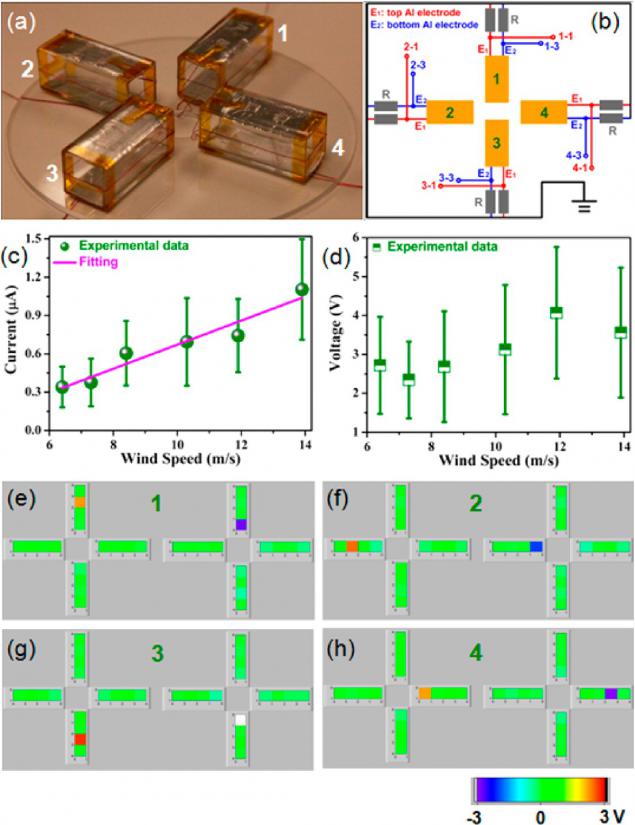1691
Blown and receives electricity

Perhaps it is because in a few words can describe the new joint development of Chinese and American scientists. In the wake of the boom of alternative energy, particularly wind, the proposed idea is not such an exotic and unreal.
Triboelectric effect - quite an interesting natural phenomenon consists in the fact that the friction of the two materials or substances (eg, with different densities) between the charge separation occurs. We all surely remember well the school experiments in physics, when the glass rod, grated fur rejects hanging strips of paper. Similar examples - experiences from the channel "Simple Science» Bredun :
Or here's another:
Of course, the polarity of the charge quantity and the potential difference depends on many parameters: humidity, temperature, nature of the used materials and so on. For some it's just a fun experiment, and for someone - a serious science, supported by theory, formulas and experiments.
Armed with this knowledge, the US (Georgia Institute of Technology) and China (Beijing Institute of Nanoenergy and Nanosystems) scientist was constructed a small device (2.5x2.5x22 cm), which allows to obtain the voltage to 100 V at a current of up to 1.6 mkrA (micro-). That gives a total of about 0.1 mW of power. The assurances of the authors of this amount elektroeenergii is enough to spark a few LEDs.
The idea of development is very simple: between two metal plates fixed thin polymer film of fluorinated polyethylene-propylene, which can move freely between them:

The created device based on the triboelectric effect: a) diagram of the device; b-d) photograph of the generator; characteristics of (e) and four generators (f), gh) demonstration of the example of LED. i>
As the authors write: "With just two effects - and triboelectric electrostatic - periodic variation of the distance between two aluminum plates and polymer film leads to a charge transport between the aluminum electrodes and the ground, which, in turn, gives the electron current in the external circuit.

Schematic of generating electricity using the triboelectric nanogenerator i>
Another application of the device, it is likely to be remote sensors measure wind speed to be installed in inaccessible areas (in the mountains or deserts, for example). In addition, these sensors will themselves provide themselves with electricity: at the expense of a small battery can store enough energy to read the wind speed and storage and / or transmission of data.

One of the potential applications: portable, cheap and autonomous stations measure wind speed i>
Video of the device can be downloaded here .
The article was published in the journal ACS Nano . Will this development in demand? Yes No Only registered users can vote in polls. Sign , please. 550 people voted. Excused 174 people.
Source: habrahabr.ru/post/208992/
Masjanja: Crowdfunding returns
For the first time scientists were able to shoot a fireball on video and study its spectrum























